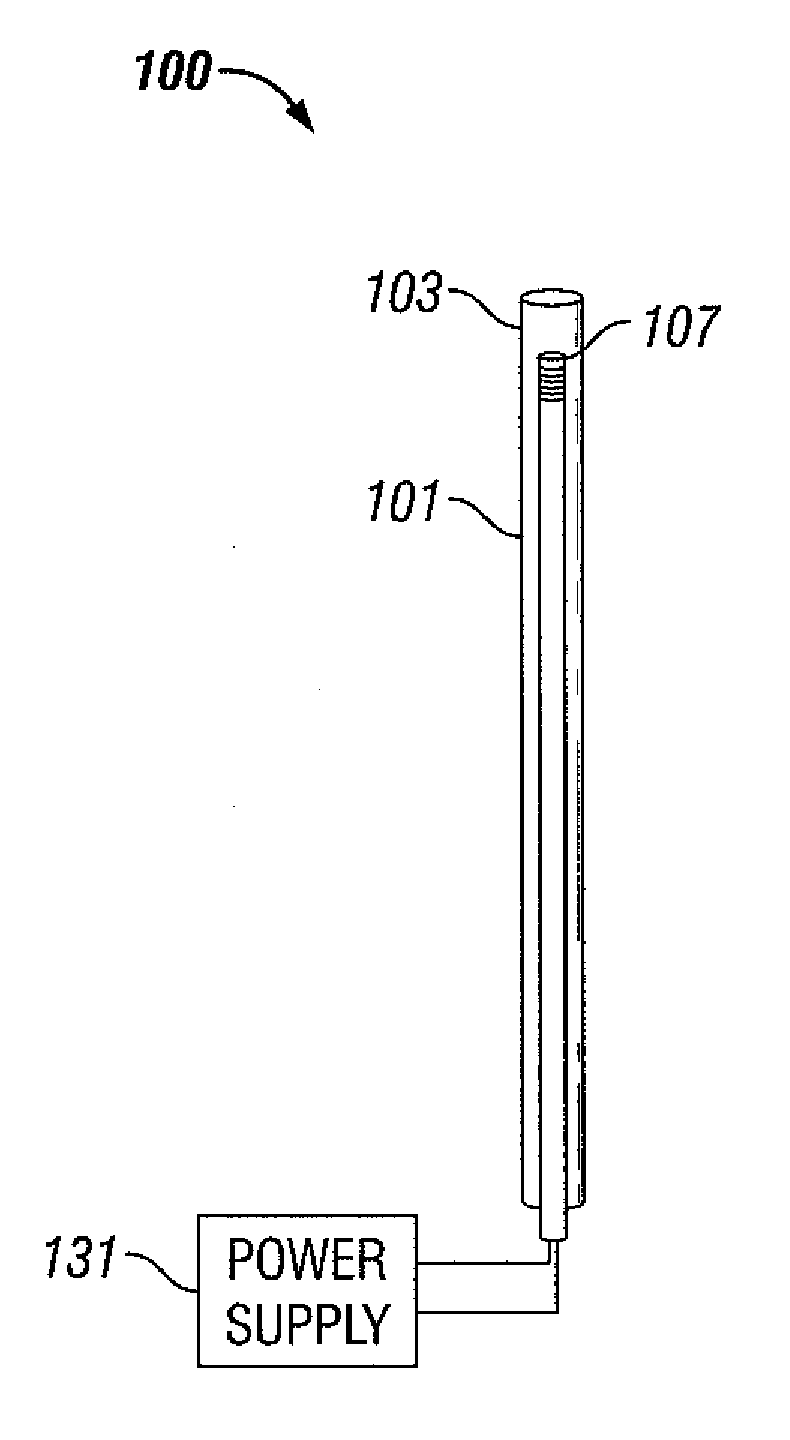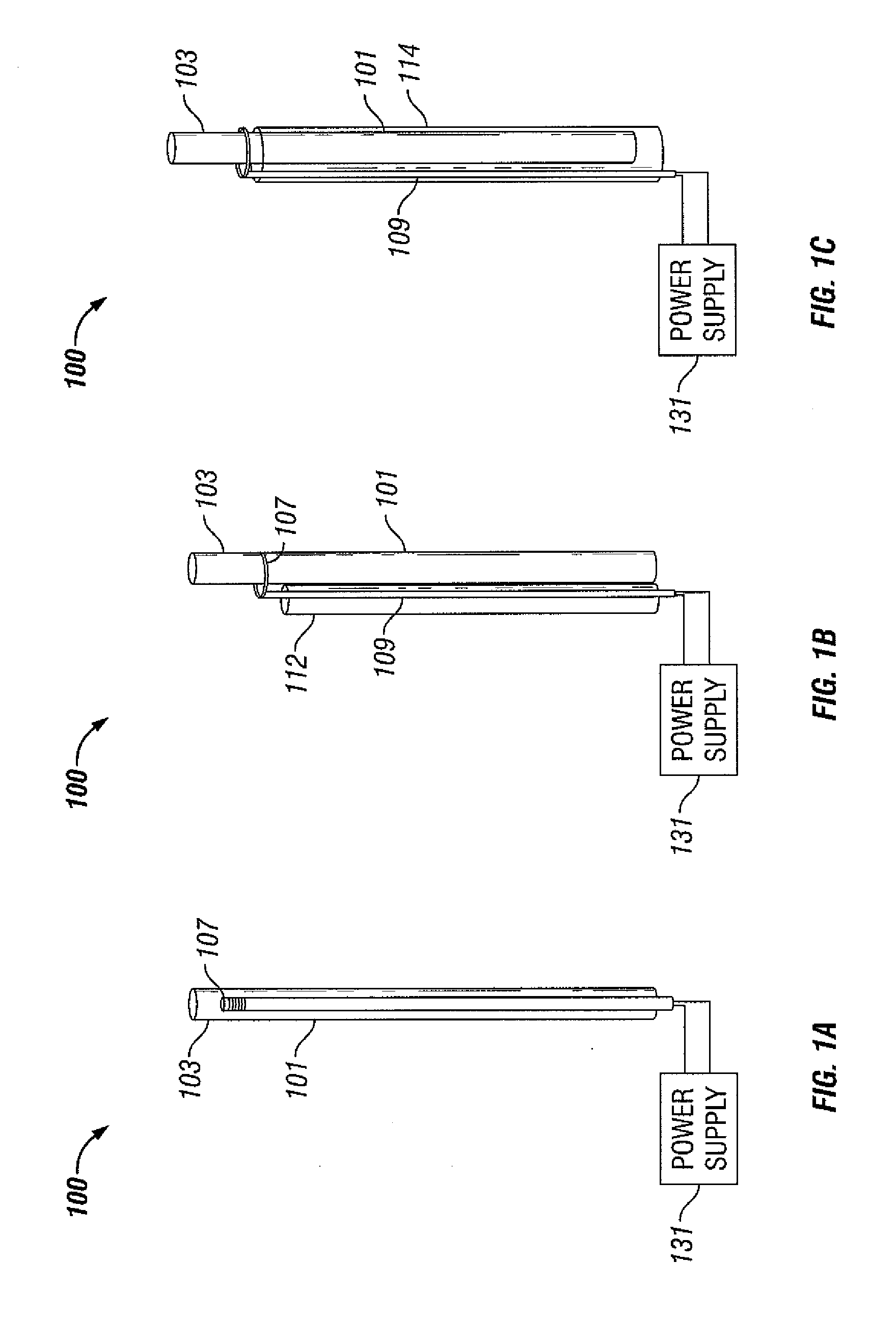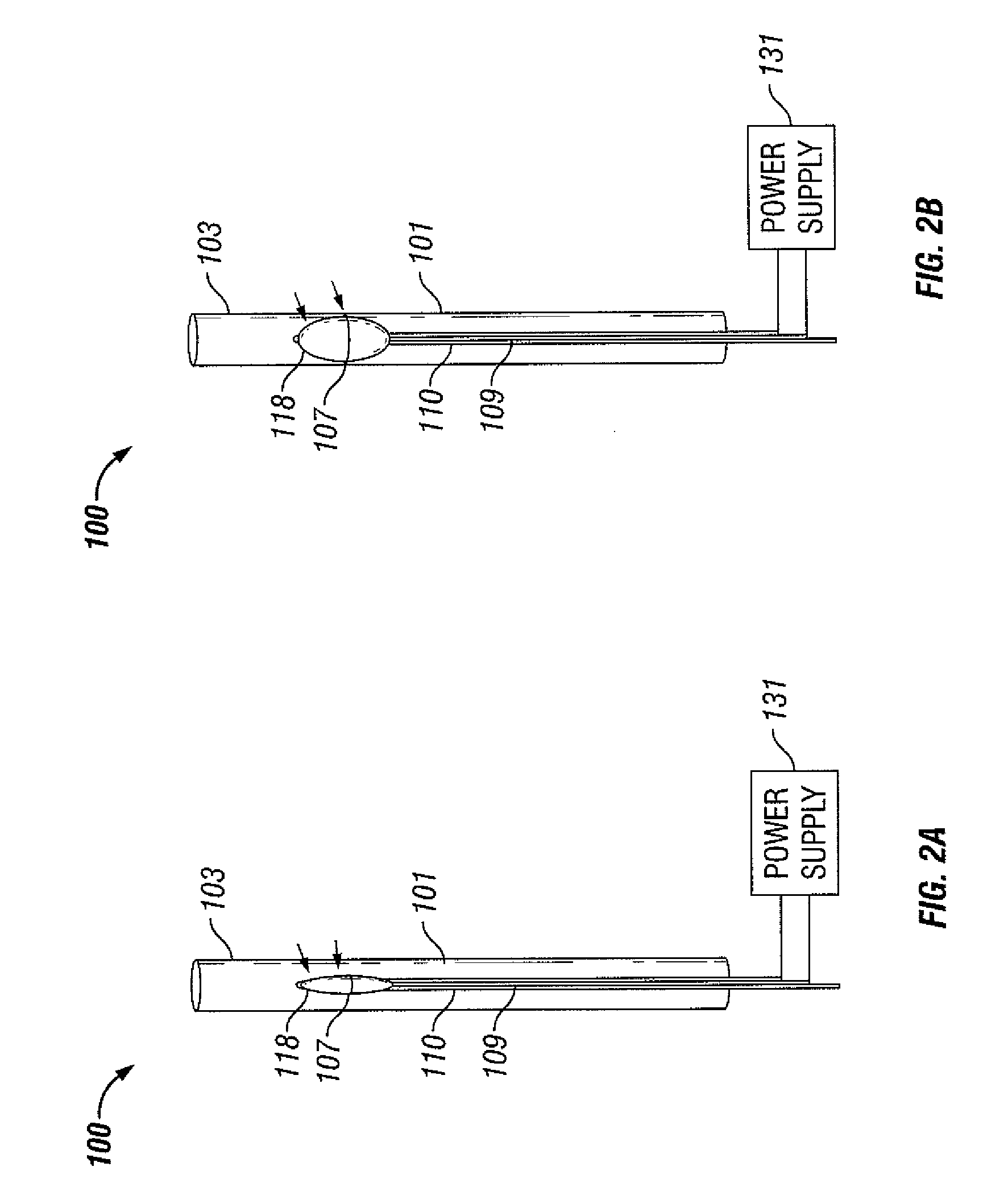Method and apparatus for the detachment of catheters or puncturing of membranes and intraluminal devices within the body
a technology of intraluminal devices and catheters, applied in the field of catheters, can solve the problems of actual risk of permanent catheter fixation, scarcity of literature data, and complications reported in up to 10, and achieve the effects of improving cure rate, reducing invasiveness and effort, and increasing morbidity/mortality of embolization procedures
- Summary
- Abstract
- Description
- Claims
- Application Information
AI Technical Summary
Benefits of technology
Problems solved by technology
Method used
Image
Examples
example
[0051] An experimental setup for the testing of the detachment procedure was constructed, which can be seen in FIG. 8. As shown in FIG. 8, a plastic tube 801 was used to simulate an artery, a catheter 803 with non-braided tip and an embolic agent (Onyx® 18 or 50% acrylic glue, Histoacryl® [n-butyl cyanoacrylate in Lipiodol®]) was used and placed in to a water bath 805. The tip of the catheter 803 was positioned within the tube 801 and embolic agent was injected through the catheter to fill the tube. The lumen of the catheter 803 was then flushed with DMSO or D5W for Onyx and glue respectively.
[0052] A Micrus-10 coil (with the coil detached) 811 was then advanced into the catheter 803 so that its tip was located within or just adjacent to the embolic cast. A fiber optic temperature probe 807 (FISO Technologies, Ste. Foy, Quebec, and Canada) was inserted near the tip of the coil pusher, which was also connected to the data acquisition device 813 to directly monitor the temperature on...
PUM
 Login to View More
Login to View More Abstract
Description
Claims
Application Information
 Login to View More
Login to View More - R&D
- Intellectual Property
- Life Sciences
- Materials
- Tech Scout
- Unparalleled Data Quality
- Higher Quality Content
- 60% Fewer Hallucinations
Browse by: Latest US Patents, China's latest patents, Technical Efficacy Thesaurus, Application Domain, Technology Topic, Popular Technical Reports.
© 2025 PatSnap. All rights reserved.Legal|Privacy policy|Modern Slavery Act Transparency Statement|Sitemap|About US| Contact US: help@patsnap.com



